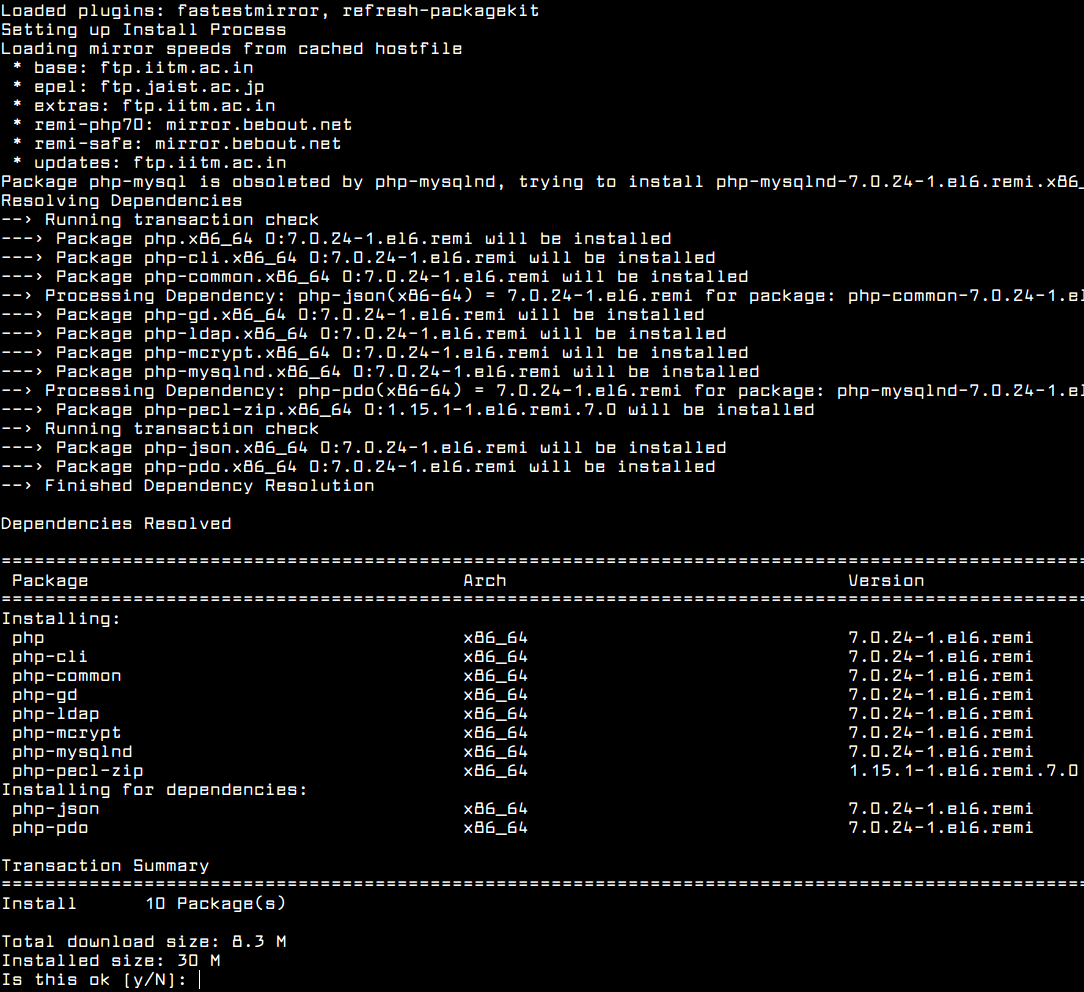The CentOS 6 official software repositories has PHP 5.3 which has reached end of life and no longer actively maintained by the developers.
To keep up with the latest features and security updates, you need a newer (probably the latest) version of PHP on your CentOS 6 system.
If you’re looking to install different versions of PHP in CentOS 6, go through the following article.
For the purpose of this guide, we will be operating the system as root, if that is not the case for you, make use of the sudo command to acquire root privileges.
Installing PHP 7 on CentOS 7
1. To install latest PHP 7, you need to add EPEL and Remi repository to your CentOS 6 system like so.
# yum install https://dl.fedoraproject.org/pub/epel/epel-release-latest-6.noarch.rpm # yum install http://rpms.remirepo.net/enterprise/remi-release-6.rpm
2. Now install yum-utils, a group of useful tools that enhance yum’s default package management features.
Yum-utils can be used for manipulating package repositories and additional package management operations such as enabling or disabling packages without any manual configuration by a system administrator.
You can install it as follows:
# yum install yum-utils
3. In this step, you need to enable Remi repository using yum-config-manager utility, as the default repository for installing PHP.
# yum-config-manager --enable remi-php70 [Install PHP 7.0]
If you want to install PHP 7.1 or PHP 7.2 on CentOS 6, just enable it as shown.
# yum-config-manager --enable remi-php71 [Install PHP 7.1] # yum-config-manager --enable remi-php72 [Install PHP 7.2]
4. Then finally install PHP 7 on CentOS 6 with all necessary PHP modules using the following command.
# yum install php php-mcrypt php-cli php-gd php-curl php-mysql php-ldap php-zip php-fileinfo

If you are curious, double check the installed version of PHP on your system as follows.
# php -V

You might also want to check out these useful PHP articles:
- How to Use and Execute PHP Codes in Linux Command Line
- How to Find MySQL, PHP and Apache Configuration Files
- How to Test PHP MySQL Database Connection Using Script
- How to Run PHP Script as Normal User with Cron
In this article, we have explained how to install PHP 7 on CentOS 6 Linux. You can send us any questions or additional thoughts via the feedback form below.







Not working for me.
[root@www ~]# yum install php php-mcrypt php-cli php-gd php-curl php-mysql php-ldap php-zip php-fileinfoAny ideas ?
@Cedric,
Please remove
iusthird party remove before enabling EPEL and Remi repository. Having multiple repositories conflict with each other..Thanks brother, I’ve updated my PHP, but got a problem with ionloader but i resolve it my self. can you help me with this error?
PHP Warning: PHP Startup: Unable to load dynamic library ‘/usr/lib64/php/modules/pdo_sqlite.so’ – /usr/lib64/php/modules/pdo_sqlite.so: undefined symbol: sqlite3_column_table_name in Unknown on line 0
Hello,
I have installed Apache 2.4 on CentOS 6.10 with PHP7. Welcome Apache page is showing Red Hat Enterprise Linux Test Page instead CentOS page.
Is this normal?
@R
It’s normal, since the two distributions are in the same family.
Thanks for tutorial, but I faced problems, after:
I get:
help please! :-D
@Marcos
Ensure that you are using CentOS 6 and you have enabled the required repositories.
I think you should use “
rh-php70-php-*” and It will work.Like: rh-php70-php-xmlrpc
If you have some other version of PHP, like say 5.6 installed from the webtatic repo, do you have to remove it before installing the 7.x collection?
@Chris
For purposes of consistency, you need to install PHP packages from the same repository. I guess it would be right to remove an old version from a different repo, before installing 7.x from Remi repository.